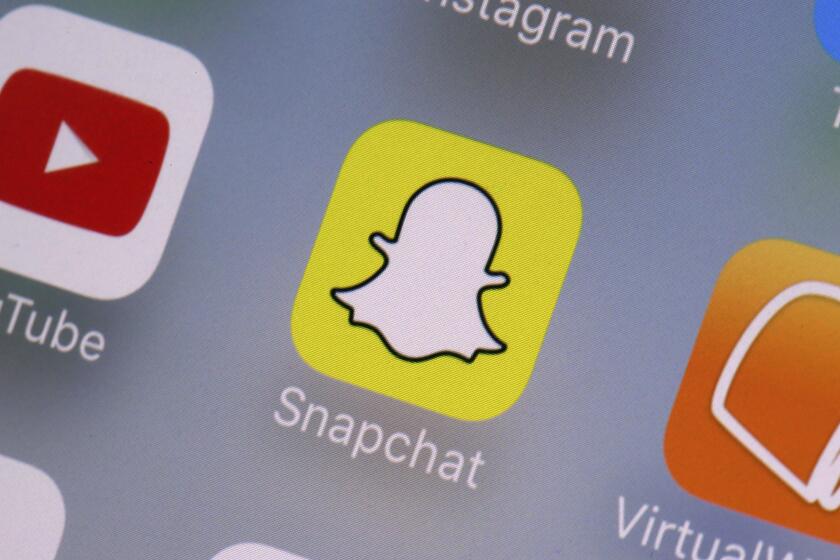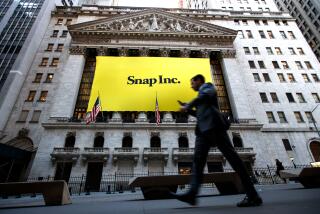Snap unveils $230 photo drone that follows you around

- Share via
Snap Inc. has a replacement for the cheap phone stands and awkward outstretched arms of modern self-filming: a yellow, square-shaped flying camera drone that costs $230, weighs about a quarter of a pound and hovers around you to film you automatically.
The original inspiration for the pocket-size drone, called Pixy, was: “What would it feel like if Tinker Bell were your personal photographer?” Chief Executive Evan Spiegel said in an interview. “On one hand, you have these bulky, almost dangerous drones that you have to manually control with a remote control. And on the other hand, you have a phone that can’t fly.”
After filming, Pixy can land in the owner’s hand autonomously. The images get uploaded automatically to the owner’s Snapchat app. It’s available for preorder in the U.S. and France, and starts shipping in late May.
Snap, which calls itself a camera company, is known for its social media app Snapchat, which is popular with young people for sending disappearing annotated photo and video messages. Snap has been working on Pixy since at least 2017 and reportedly developed the device with the Beijing drone company Zero Zero Robotics.
The drone is another product to emerge from Snap’s hardware labs and is meant to further its pursuit of the still embryonic market for augmented reality — the much-hyped technology that superimposes digital graphics on images of the real world.
Snap hopes its investments in augmented reality will help its Snapchat app capitalize on the e-commerce boom.
Last spring, the company announced a fourth version of its camera-equipped glasses, called Spectacles, with augmented reality technology built in. But those remain available only for developers. Apple Inc., Facebook parent Meta Platforms Inc. and Amazon.com Inc. are also all working on glasses featuring augmented reality as well as products devoted to virtual reality and mixed reality, which combines the two.
Spiegel says Snap’s focus is solely on AR. “Our bet is firmly on the real world. We just believe that people enjoy the real world and enjoy being together with their friends, but also that it makes computing a lot more familiar, approachable and easier to use.”
The company announced a deal with concert giant Live Nation Entertainment Inc. to develop augmented reality experiences for performances and music festivals such as Lollapalooza. Special effects can extend from the stage and appear on the phones and eventually the Spectacles of concertgoers. Concertgoing fits with the app’s demographic: Snap says it reaches more than 75% of the 13- to-34-year-olds in more than 20 countries.
Snap also disclosed that it had acquired Forma, a San Francisco AR company that developed technology to let people create photo-realistic avatars of themselves. Snap is using Forma’s technology to let its users visualize themselves trying on clothes, part of a broad push to bring augmented reality tools to retailers, fashion brands and users and help them shop on the app.
Snapchat users are already familiar with avatars, after the company in 2016 acquired the maker of Bitmoji, the personalized cartoon stickers people can send in their messages to react to one another’s content.
Snap, which has been remarkably free of the recent drama dogging competitors such as Meta and Twitter Inc., also used its annual event to give an update on its user growth. It said its Snapchat app now has more than 600 million monthly active users, up from 500 million a year ago, making it bigger than Twitter but not as large as Instagram or another surging rival, TikTok.
Of the turmoil surrounding Twitter and its planned purchase by Elon Musk, Spiegel said, “I think Elon is a power user with a lot of great insight on Twitter and where to take it in the future. I’m optimistic that they’ve got a lot of great success ahead.”







